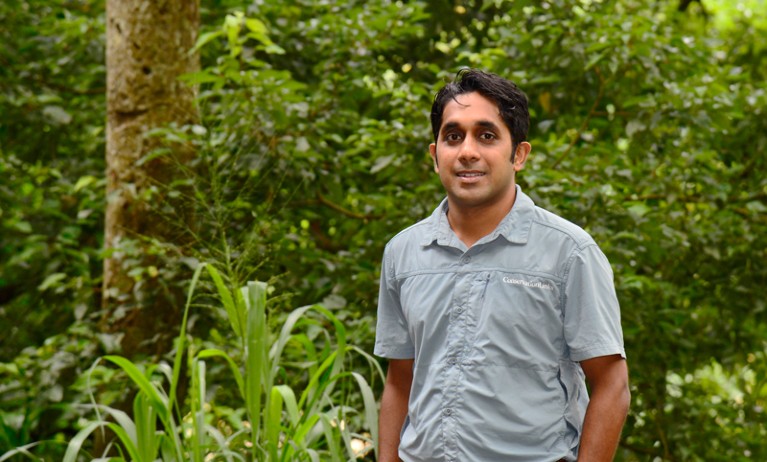
Credit: Lahiru S. Wijedas
Ecologist Lahiru Wijedasa at the National University of Singapore submitted a paper in 2015 that warned of future dangerous carbon emissions from Indonesia’s peatland forests. The paper was finally published this month (L. S. Wijedasa et al. Glob. Change Biol. http://doi.org/cqtm; 2018). Wijedasa explains how his views changed during the process.
Why do peatland forests matter globally?
Peatland forests are carbon-rich swamps that have formed over centuries. In Indonesia, massive areas have been drained to grow crops, particularly oil palm and acacia. In 2011, the Indonesian government imposed a moratorium on issuing licences to clear land for industrial-scale development. But in 2015, fires on cleared lands produced more emissions than did the whole of Europe. Indonesia now has a Peatland Restoration Agency, which reports to the president and is mandated to restore 2 million hectares of peat forest by 2020. Our paper shows, however, that 51% of emissions will come from areas that have already been drained and are used for industrial agriculture.
That’s bleak. What is the take-home message?
First, we need to maintain our remaining intact forest, of which 45% is not in protected or moratorium areas. My data show that 48% of the moratorium area isn’t even peat swamp forest. Second, we’ll need alternative forms of agriculture, so that communities can grow crops on wet peat soils.
Why did it take 3 years to publish your paper?
I submitted the paper in 2015. We went through four rounds of review and redid a lot; for example, we initially had three emissions scenarios, but increased those to the 18 defined by the Intergovernmental Panel on Climate Change. However, it was eventually rejected on the grounds of insufficient novelty. We then submitted it to Global Change Biology, which published it within three months.
Were your predictions higher than expected?
Data on peatland emissions have been controversial — in part, because some industry-funded studies have generated lower numbers. To address all potential scenarios, we assessed land-cover change from 1990 to 2010 using LandSat satellite imagery. Then we estimated emissions from peat between 1990 and 2130 for a range of agricultural expansions.
How did your views change?
Initially, I had thought that big palm-oil and acacia companies were solely to blame. But after spending more time in Sumatra and other areas of Indonesia, I saw that many of the company-owned forests are among the better-managed areas. Also, some of the palm-oil and acacia companies have set aside prime land for conservation, and have lobbied the government to protect forest that they legally could have developed. I now think that companies are part of the solution.
Did you consider community farmers?
Yes. Smallholders accounted for 60% of conversion outside the original government-designated areas. Whereas I might once have argued to restore all peatlands, I now better understand how much smallholders depend on the land, and that they clear forest to improve their livelihoods. Finding opportunities for sustainable agriculture could eliminate 51% of future emissions.
Does your work let palm-oil and acacia companies off the hook?
No. There are good companies and terrible companies, but the few companies who step up to work with the government are often the targets of bad press. Good companies are the best potential partners in conservation because they have the finances, enforcement ability and motivation — owing to public opinion — to protect these lands. And company-driven conservation has worked several times in Indonesia. It also offers a way for firms to atone for past deforestation in a country that desperately needs that help.

 Competitions: Grand challenges
Competitions: Grand challenges
 Counting the carbon cost of peatland conversion
Counting the carbon cost of peatland conversion







